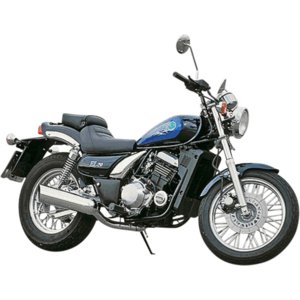Kawasaki EL 250 Eliminator (1987–2003): A Mini-Cruiser That Punches Above Its Weight
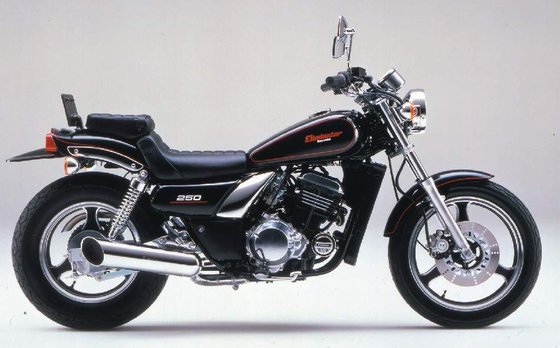
Introduction
The Kawasaki EL 250 Eliminator is a motorcycle that defies expectations. Produced from 1987 to 2003, this compact cruiser carved out a niche as a beginner-friendly bike that didn’t compromise on performance or style. Unlike many mini-cruisers of its era, the EL 250 wasn’t just a rebadged commuter bike with ape hangers—it borrowed technology from sportier models, wrapped it in a low-slung chassis, and delivered a ride that still feels surprisingly relevant today.
I recently spent a week with a well-maintained 1995 EL 252 variant, and it’s clear why this bike developed a cult following. From its rev-happy engine to its unintimidating ergonomics, the Eliminator strikes a balance between practicality and fun that’s rare in the 250cc class. Let’s dive into what makes this generation tick.
Design & Styling: Small Bike, Big Presence
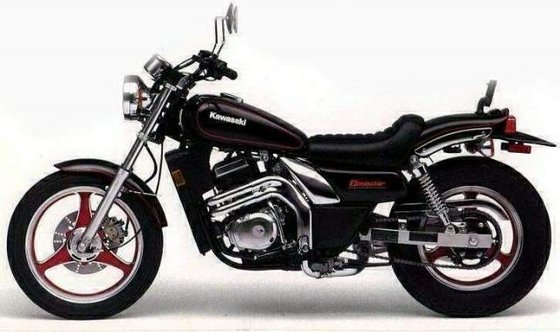
Kawasaki’s designers nailed the cruiser aesthetic here. The EL 250’s 1490 mm (58.7 in) wheelbase, teardrop fuel tank, and raked-out front fork (29° head angle) give it proportions closer to a 600cc machine. The 725 mm (28.5 in) seat height is accessible for riders of all sizes, and the pulled-back handlebars encourage a relaxed posture.
Details matter:
- Chrome accents on the engine covers and exhaust add visual weight
- Blacked-out components (radiator shroud, frame sections) hide bulk
- Metallic paint options (deep purples, blues) catch sunlight beautifully
That said, the Eliminator isn’t a Harley clone. The liquid-cooled engine’s radiator (a 1990s necessity) breaks up the classic lines, and the rear fender’s integrated turn signals scream ’90s pragmatism. Still, park it next to a Honda Rebel 250, and the Kawasaki looks decisively more muscular.
Engine & Performance: The Sportbike Heart
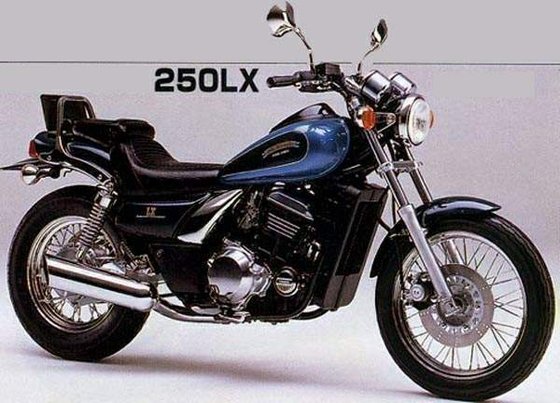
At the core of the EL 250 lies a 249–253cc liquid-cooled parallel twin—a detuned version of the engine from Kawasaki’s ZZ-R250 sportbike. With DOHC, four valves per cylinder, and a 12.4:1 compression ratio, this isn’t your grandad’s puttering cruiser mill.
Key specs (metric/imperial):
- Power: 27–33 HP (20–24.6 kW) @ 11,800–12,500 RPM
- Torque: 19–24 Nm (14–17.7 lb-ft) @ 9,500–10,000 RPM
- Redline: 12,500 RPM (earlier models) to 16,000 RPM (late ’90s variants)
Twist the throttle, and the engine’s personality splits in two:
1. Below 7,000 RPM: A docile commuter with enough grunt to hold 80 km/h (50 mph) in 6th gear
2. Above 8,000 RPM: A buzzy, exhilarating rush that pulls strong to an indicated 140 km/h (87 mph)
The six-speed gearbox is a revelation. Unlike the four-speed transmissions in rivals like the Suzuki GN250, the EL lets you hunt for the powerband. Highway merging? Drop from 6th to 4th, and watch the tach needle swing past 10k RPM—the howl from the twin carburetors is addictive.
Handling & Braking: Confidence in the Curves
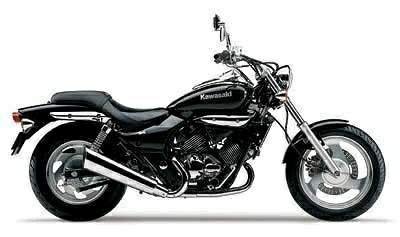
Mini-cruisers aren’t known for cornering prowess, but the EL 250 surprises. The 36mm telescopic forks and dual rear shocks (96mm travel) feel firm yet compliant, resisting wallowing in sweepers.
Test ride observations:
- Low-speed stability: The 350 lb (159 kg) wet weight and 690mm (27.1 in) seat make parking lot maneuvers foolproof
- Mid-corner adjustability: Flickable at lean thanks to the 140/90-15 rear tire’s rounded profile
- High-speed wobbles: Noticeable above 110 km/h (68 mph), especially with crosswinds
Braking performance outshines competitors. The single 226mm front disc (upgraded to 300mm on later VN250V models) provides strong initial bite, while the rear drum anchors the bike predictably.
Comfort & Practicality
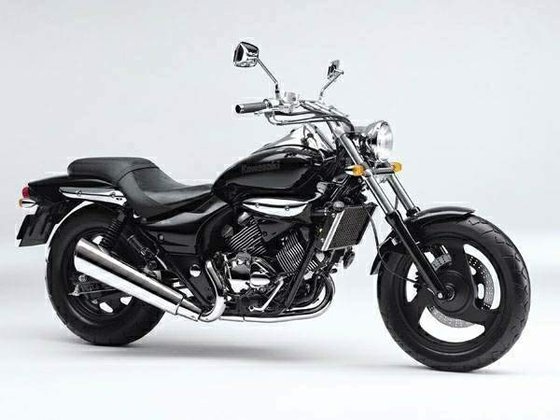
Kawasaki prioritized rider comfort without sacrificing the cruiser vibe:
- Saddle: Plush vinyl seat (715mm/28.1 in height) accommodates 2-hour rides
- Footpegs: Mid-set position reduces knee strain vs. forward controls
- Fuel efficiency: 20.8 km/L (49 mpg) means 230 km (143 mi) from the 11L (2.9 gal) tank
The analog gauge cluster—speedometer, tachometer, and warning lights—is legible day or night. Storage? Forget it. This is a minimalist machine.
Competition: How the EL 250 Stacks Up
The EL 250’s prime rivals in the 250cc cruiser segment:
| Model | Power | Brakes (Front) | Suspension Travel | Weight |
|-------------------|-------|----------------|-------------------|--------|
| Kawasaki EL250| 33 HP | 226mm disc | 140mm front | 159 kg |
| Suzuki GN250 | 22 HP | Drum | 120mm front | 136 kg |
| Yamaha SR250 | 20 HP | Drum | 130mm front | 129 kg |
| Honda Rebel 250 | 19 HP | Disc | 130mm front | 139 kg |
Key advantages:
- Engine: The EL’s twin dominates rivals’ singles in power and refinement
- Gearbox: Six speeds vs. five (Honda) or four (Yamaha)
- Build quality: Thicker frame tubing, premium switchgear
The Suzuki GS500 (500cc) and Kawasaki’s own VN250V (V-twin) were upmarket alternatives, but neither matched the EL’s blend of approachability and performance.
Maintenance: Keeping Your Eliminator Running Strong
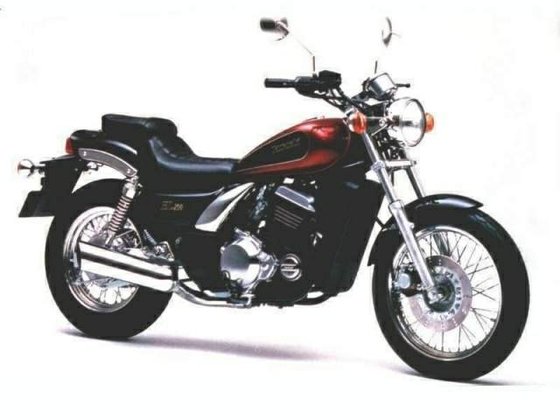
As a MOTOPARTS.store journalist, I’ve seen EL 250s clock 50,000+ km with proper care. Here’s your upkeep cheat sheet:
1. Valve Adjustments (Every 6,000 km/3,700 mi)
- Intake: 0.08–0.13 mm (0.003–0.005 in)
- Exhaust: 0.11–0.16 mm (0.004–0.006 in)
Pro Tip: Use MOTOPARTS.store’s Shim Kit (PN: SHIM-KAW-4V) for hassle-free clearance checks
2. Oil Changes (Every 3,000 km/1,860 mi)
- Capacity: 1.7L (1.8 qt) without filter, 1.9L (2.0 qt) with filter
- Recommended: MOTOPARTS 10W-40 Synthetic Blend (PN: OIL-10W40-SB)
3. Chain & Sprockets
- Stock gearing: 14T front / 40–44T rear
- Upgrade: DID 520VX3 Chain + JT Sprockets Combo (PN: CH-520VX3-JT)
4. Brake Service
- Front pads: EBC FA123 (PN: EBC-FA123)
- Fluid: DOT 4 (replace every 2 years)
5. Winterization
- Coolant: 1L of MOTOPARTS.store’s Silicate-Free Blue (PN: COOL-SF-BLUE)
- Fuel stabilizer: Add 15ml to the 11L tank
Conclusion: Why the EL 250 Still Matters
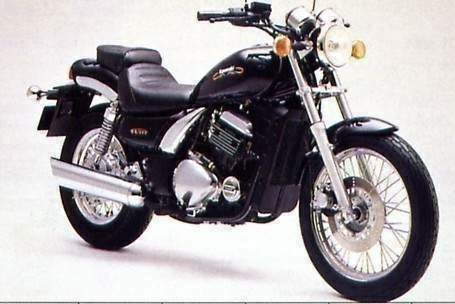
The Kawasaki EL 250 Eliminator is that rare 250cc machine that doesn’t feel like a compromise. Its revvy twin engine, confident handling, and timeless styling make it a joy to ride decades after its debut. While later models (like the 252cc variants) ironed out early quirks, even ’80s examples remain viable daily riders with basic maintenance.
For current owners, MOTOPARTS.store carries everything from OEM-spec replacement parts to performance upgrades. Swap in a 15T front sprocket (PN: JT-SPRO-15T) for smoother highway cruising, or install progressive-rate shocks (PN: PRS-KAW-EL25) to eliminate that rear-end pogo.
Whether you’re a new rider seeking a friendly first bike or a veteran wanting a hassle-free commuter, the EL 250 delivers—and our parts network ensures it’ll keep delivering for miles to come.

Specifications sheet
| Engine | |
|---|---|
| Stroke: | Four-stroke |
| Max power: | 25 kW | 34.0 hp |
| Max torque: | 17 Nm |
| Fuel system: | Carburetor |
| Max power @: | 12500 rpm |
| Displacement: | 253 ccm |
| Max torque @: | 9900 rpm |
| Bore x Stroke: | 62.5 x 41.2 mm (2.5 x 1.6 in) |
| Configuration: | Inline |
| Cooling system: | Liquid cooled |
| Compression ratio: | 12.4:1 |
| Number of cylinders: | 2 |
| Dimensions | |
|---|---|
| Wheelbase: | 1490 mm (58.7 in) |
| Dry weight: | 143 |
| Wet weight: | 155 |
| Seat height: | 725 mm (28.5 in) |
| Ground clearance: | 160 mm (6.3 in) |
| Fuel tank capacity: | 11 L (2.9 US gal) |
| Drivetrain | |
|---|---|
| Final drive: | chain |
| Chain length: | 114 |
| Transmission: | 6-speed |
| Rear sprocket: | 44 |
| Front sprocket: | 14 |
| Maintainance | |
|---|---|
| Rear tire: | 140/90-15 |
| Engine oil: | 10W40 |
| Front tire: | 100/90-17 |
| Break fluid: | DOT 4 |
| Spark plugs: | NGK CR8HSA or NGK CR8HIX |
| Spark plug gap: | 0.7 |
| Coolant capacity: | 1.0 |
| Forks oil capacity: | 0.44 |
| Engine oil capacity: | 1.9 |
| Engine oil change interval: | Every 5000 km or 2 years |
| Valve clearance (intake, cold): | 0.08–0.13 mm |
| Valve clearance check interval: | 24,000 km / 15,000 mi |
| Valve clearance (exhaust, cold): | 0.11–0.16 mm |
| Recommended tire pressure (rear): | 2.5 bar (36 psi) |
| Recommended tire pressure (front): | 2.3 bar (33 psi) |
| Chassis and Suspension | |
|---|---|
| Frame: | Steel double cradle |
| Rear brakes: | Drum |
| Front brakes: | Single 226 mm disc, 1-piston caliper |
| Rear suspension: | Dual shocks with adjustable preload |
| Front suspension: | Telescopic fork, 36 mm diameter |
| Rear wheel travel: | 100 mm (3.9 in) |
| Front wheel travel: | 140 mm (5.5 in) |



